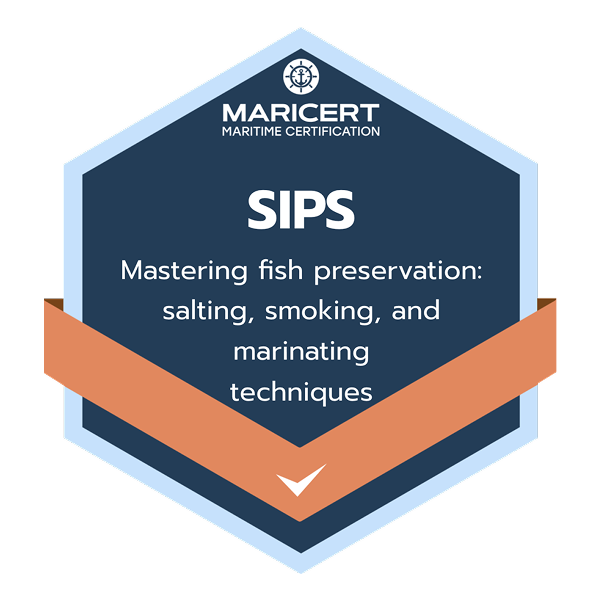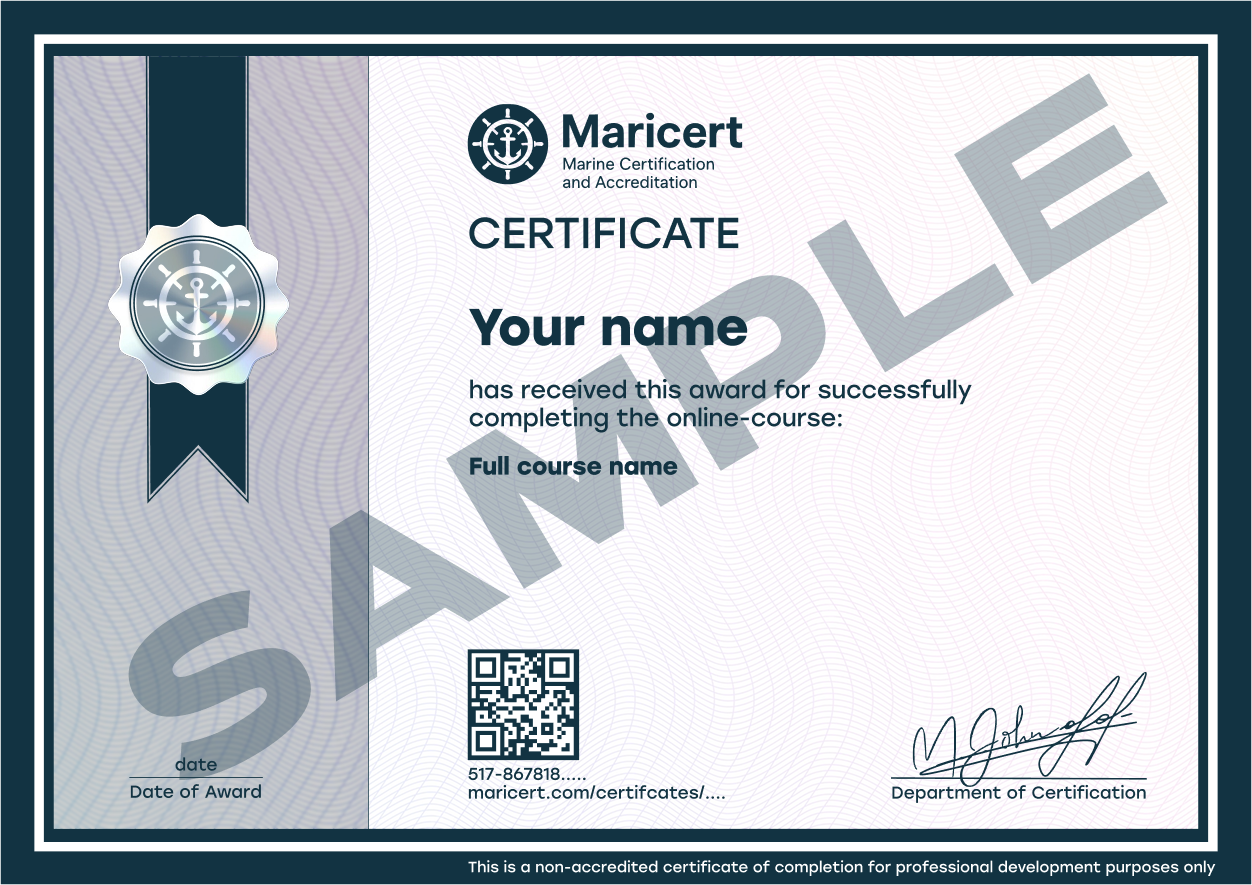Mastering fish preservation: salting, smoking,and marinating techniques
LESSONS
- Glossary
- Irradiation of fish and seafood
- Quality of irradiated fish and its impact on shelf life
- Impact of irradiation on fish and shelf life extension
- Influence of gamma irradiation on fish quality and shelf life
- Impact of gamma irradiation on shellfish, crustaceans, and mollusks
- Microflora of irradiated fish and fishery products
- Bacterial control in irradiated anchovy during cold storage
- Microbial control and shelf life extension in irradiated fish
- Microbial control in irradiated shellfish, crustaceans, and mollusks
- References
- Test
- Certificate


Duration
7–9 hours for studying the theoretical material, 2 hours for completing the final test.
Certificate
Upon successful completion of the online course, you will receive a certificate titled:
"Advanced Seafood Processing & Safety: Extending Shelf Life".
lifetime certificate.


Database registration
Each certificate has a unique serial number, is registered in our database, and includes a QR code for authenticity verification. Add your certificates when sending your CV, and your future employer will be able to verify them.
Course description
This course explores traditional and modern fish preservation techniques, focusing on salting, marination, and smoking methods. You'll learn how salt, acid, temperature, and packaging affect product stability, texture, flavor, and safety. The course covers dry and brine salting, injection techniques, cold and hot smoking, and various marination methods. It also examines rehydration processes, storage conditions, and quality classification systems used across global markets. Scientific principles such as protein denaturation, lipid oxidation, and moisture transfer are explained in practical terms to help you understand how curing methods impact final product characteristics. With case studies and best practices from top-producing regions, this course provides an in-depth understanding of how to preserve fish for extended shelf life, optimal quality, and consumer safety.
What you’ll learn
- How different salting techniques affect texture, yield, and preservation
- The science of salt and water transfer in muscle tissue
- Modern injection salting and its impact on quality
- How marination improves taste, shelf life, and microbial safety
- The differences between hot and cold smoking methods
- How packaging, storage, and rehydration influence final product quality
- Key sensory and chemical indicators of high-quality cured fish
- Global standards for classification and grading of salted fish
Who this course is for
- This course is designed for seafood processors, quality managers, food technologists, industry students, and professionals involved in fish production, storage, or distribution. It is ideal for those who want to understand traditional curing methods as well as modern technological innovations in salting, marination, and smoking. Whether you're working in a fish factory, developing new seafood products, or pursuing academic knowledge, this course offers both practical and theoretical insights to help improve product quality and ensure food safety.
FAQ
First, please check your spam or promotions folder — sometimes emails land there. If you still don’t see anything, contact us at https://maricert.com/contact/ — we’ll check your order and grant access as soon as possible.
You can retake the test as many times as needed. There are no penalties or additional fees.
Yes. All lessons and tests are in written format. You can use Google Chrome with auto-translation or third-party tools. Our goal is to make learning accessible to everyone.
Absolutely. The platform is fully optimised for mobile. You can study from your phone, tablet, or laptop — whichever is most convenient for you.
You get 12 months of access from the date of purchase. You can study at your own pace. If the course isn’t completed within that period, access will be revoked without a refund. Refunds are not available once access is granted, as digital content is considered delivered in full (as per the UK Consumer Contracts Regulations 2013).
Your certificate will be sent to your email and also registered in the Certifier.io verification database. You'll receive a PDF version that you can attach to your CV.
Each certificate includes a unique ID and QR code. Employers can verify authenticity via the Certifier database or directly through the Maricert website.
Yes. We recommend including a direct Certifier.io link in your CV, cover letter, or LinkedIn profile to help build trust with employers.
No. Our courses are open to everyone, including beginners. You don’t need any maritime documents to enrol.
They can be added to your CV when applying for jobs on crabbing vessels, fishing fleets, seafood factories, and maritime logistics companies. They’re especially valuable for those with no prior experience.
Yes. While our certificates don’t guarantee a visa, they can serve as additional proof of qualifications when applying for seasonal or work visas.
We are not a recruitment agency, but our certificates and diplomas can improve your chances when applying directly to employers — especially if you’re new to the industry.
Yes. Maricert is officially registered in the UK Register of Learning Providers (UKPRN: 10098283) and complies with ICO (Information Commissioner's Office) data protection regulations.
Yes. You can purchase a course using another person’s email address or contact support to have access transferred after the purchase.
